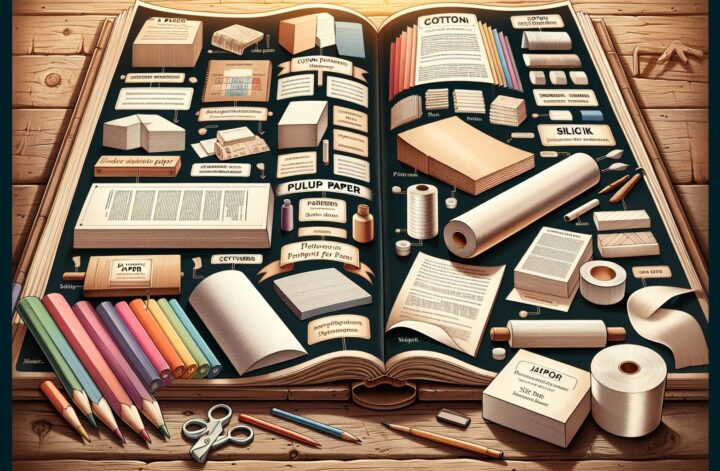Printing has been a fundamental tool for communication and preservation of knowledge throughout history. From the invention of the printing press to the modern digital printers, this technology has continued to evolve, as have the materials used for printing. In this comprehensive guide, we will explore the various printing materials available today, their characteristics, and their applications.
Introduction: The Importance of Choosing the Right Printing Material
Printing materials play a crucial role in the final quality and durability of any printed item. Whether you are producing brochures, business cards, or banners, selecting the appropriate material is essential. It affects not only the visual appeal but also determines factors such as texture, longevity, and even ecological impact.
Types of Printing Materials
-
Paper
Paper is the most common material used for printing, given its versatility and cost-effectiveness. It comes in various types and grades, each suitable for different applications. From lightweight bond paper to heavy cardstock, the choice depends on factors such as the desired finish, weight, and durability. -
Cardstock
Cardstock is a heavyweight paper suitable for various printing projects that require extra durability. It is commonly used for items like business cards, postcards, and invitations. Its thicker texture gives a more substantial and professional feel to printed materials. -
Synthetic Materials
Synthetic materials, such as polyester and vinyl, offer excellent durability and resistance to moisture and tearing. Synthetic substrates are widely used for outdoor signage, banners, and even waterproof labels. They can withstand harsh weather conditions, making them ideal for outdoor applications. -
Specialty Papers
Specialty papers refer to a broad category of unique materials with specific features. Examples include photo paper, glossy paper, matte paper, and textured paper. Each of these materials caters to specific needs and preferences, such as enhancing image sharpness or providing an elegant touch to invitations or greeting cards. -
Acetate and Transparency Film
Acetate sheets and transparency film are commonly used in overhead projector presentations, but they also find utility in other printing applications. Acetate is often utilized for creating transparencies, while transparency film is popular for producing high-resolution images or vibrant color prints. -
Fabrics
Printing on fabric has gained popularity due to advancements in technology. Polyester and cotton are the most commonly used materials for fabric printing. The resulting prints can be used to create custom t-shirts, flags, banners, or even large-scale textile artwork. -
Plastic
Plastic printing materials, like PVC and polystyrene, have become prevalent in the advertising and promotional industry. They are commonly used for producing business cards, ID cards, signs, and displays. Plastic materials offer durability, water-resistance, and the possibility of creating eye-catching designs through techniques such as embossing and debossing.
Factors to Consider When Choosing Printing Materials
Selecting the right printing material depends on several crucial factors that determine the intended use and desired results. Consider the following aspects before making a decision:
-
Visual Appeal
The appearance of the printed item is influenced by factors like paper finish, color vibrancy, and texture. Choose materials that align with your design goals. For instance, matte paper offers a subdued and elegant look, while glossy paper adds vibrancy and sharpness to colors. -
Durability
Consider the lifespan and resilience required for your printing project. If the printed material will be frequently handled or exposed to outdoor conditions, opt for materials like synthetic substrates or cardstock that offer enhanced durability. -
Environmental Impact
With an increasing focus on sustainability, it is vital to consider the ecological footprint of printing materials. Look for options made from recycled materials or those that are easily recyclable or biodegradable. -
Budget
Printing materials encompass a wide range of prices, so setting a budget is essential. Carefully weigh the costs against the desired quality and durability to make an informed decision.
Conclusion
Choosing the right printing materials is a vital step toward achieving excellent print quality and durability. The variety of materials available ensures that there is something suitable for every printing project, whether it’s professional documents, marketing collateral, or personal creations. By considering factors such as visual appeal, durability, environmental impact, and budget, you can make an informed decision that aligns with your specific printing needs and goals. Remember, the material you choose will greatly enhance the overall impact of your printed items and leave a lasting impression on their recipients.

